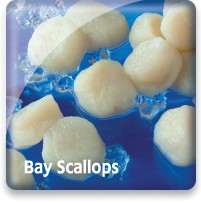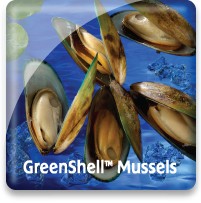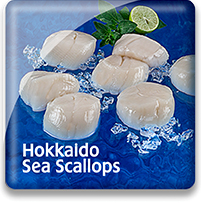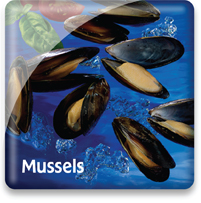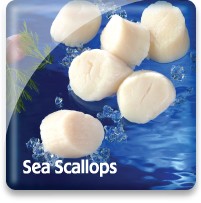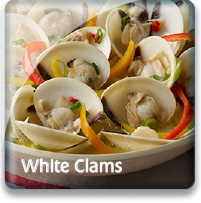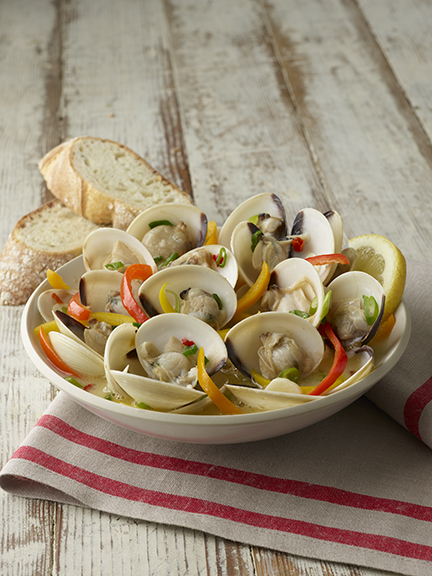
White Hard Clams

Market Name: Eating QualitiesWhite Hard Clams have a sweet and delicate clam flavor. The superior meat-to-shell ratio make for the perfect steamed clam feast with drawn garlic butter, clam juice, or various sauces
Clams live in the sand upside down. The White Hard Clam has a one year harvest cycle. Some Clams can survive for months out of water.
|
Description & CharacteristicsThe White Hard Clam from Vietnam is a bivalve mollusk inhabiting intertidal and shallow sub tidal sandy/muddy areas primarily around the coastline of Ben Tre province. The White Hard Clam is a filter feeder and has the fastest growth rate during the rainy season when more nutrients wash into the tidal areas from nearby river systems. The average size at harvest when the clam is one year old is approximately two inches across. The White Hard Clam fishery Sea Port sources from is considered farming due to the fact that clam larvae are collected from natural areas and deposited on leased tidal flats for grow out. Commercial harvesting is done by hand rakes and small mechanical dredges, sorted on site for size, and then transported via small boats to the nearby processing facilities. The Vietnamese White Hard Clam has become popular throughout Asia, Europe, and most recently in the United States due to its tasty meat and beautiful white shell color. Sea Port sources frozen fully cooked whole White Hard Clams in the shell that can be quickly heated for immediate enjoyment. Other Resources |
Handling Instructions for White Hard Clams
Frozen White Hard Clams should be stored at or below 0°F (-18°C) and then thawed properly when ready to cook. Our frozen White Hard Clams can be stored frozen for up to 18 months. Links to proper seafood handling instructions: NOAA - Fish Watch: Handling Seafood and A Consumer Guide to Safe Seafood Handling.
Thawing White Hard Clams
Our White Hard Clams should be thawed by removing them from their package and placing them in a sealed plastic bag or container and placed in the refrigerator (33 to 39°F) for 12 to 24 hours or until completely thawed. To speed up this thawing process, White Hard Clams can also be placed in a colander and rinsed under cold water to remove any ice glazing and then placed in the refrigerator for proper thawing. White Hard Clams should not be completely quick thawed in a colander under cold running water because their natural flavors have a tendency to be easily washed away. White Hard Clams that are not consumed immediately after complete thawing need to be refrigerated between 33 and 39°F and consumed within 2-3 days.
Important Instructions for White Hard Clams
Upon complete thawing, gently remove the White Hard Clams from the milky colored natural White Hard Clam juices that have seeped from the White Hard Clams during thawing. This weeping of juices is perfectly normal. White Hard Clams that are cooked immediately after thawing produce the best quality.
Cooking Tips
White Hard Clams are quick and easy to cook in as little as 7-14 minutes by baking, steaming, boiling, broiling, barbecuing or pan frying. White Hard Clams are delicate in texture and taste and should not be overcooked or they can become rubbery and lose flavor.
Vietnam
With a coastline of 2,140 miles, as well as numerous rivers and lakes, Vietnam has had a long tradition of fishing and a culinary tradition that includes finfish, shellfish, and molluscan shellfish. Bordering China in the far North, and Laos and Cambodia in the middle and Southern regions, the country—known officially as the Socialist Republic of Vietnam—is divided into 58 provinces, and includes several major sea ports.
With seafood production surpassing USD $6 billion in 2012, seafood—both cultured and wild—represents an important export for this developing country. Major seafood exports from Vietnam include cultured and wild shrimp: Black Tiger prawns and Penaeus vannamei are grown in Southeast Vietnam. Vietnam is becoming known for its high-tech seafood processing industry, adding value to commercially harvested and farmed fish and seafood.
Species that are commercially caught include Grouper, Red Snapper, Red Mullet, Tuna, Swordfish, and Barramundi—which are the major species that are exported to Australia, the United States, and the EU. Vietnam is also a major producer of farmed Tilapia, and two species of Pangisius (boucourti and hypothalamus). Squid and octopus, as well as various species of lobster and crab and molluscan shellfish are also major export products as well as products consumed in-country.
Go Blue! Seafood Sustainability Spectrum*Click here for an explanation of our Sustainability Spectrum 
Sustainability AssessmentSea Port imports Vietnamese White Hard Clams that are MSC certified as sustainable. In general, the environmental risks of clam aquaculture, as with other types of bivalve shellfish aquaculture, are limited as long as farms are properly sited, managed, and monitored. Since clams are filter feeders—meaning they feed by removing small particles, including plankton and other nutrients, from the water column—clam farming does not require supplemental feed and can actually improve local water quality.
Environmental Impact: LowClam farming has relatively minimal environmental impacts, provided farms are properly sited and managed, and can potentially improve local water quality. Excessively nutrient rich or polluted runoff from watersheds into coastal areas where clam farming exists needs to be monitored and mitigated for the long term health of all bivalve shellfish farming in Vietnam and elsewhere.
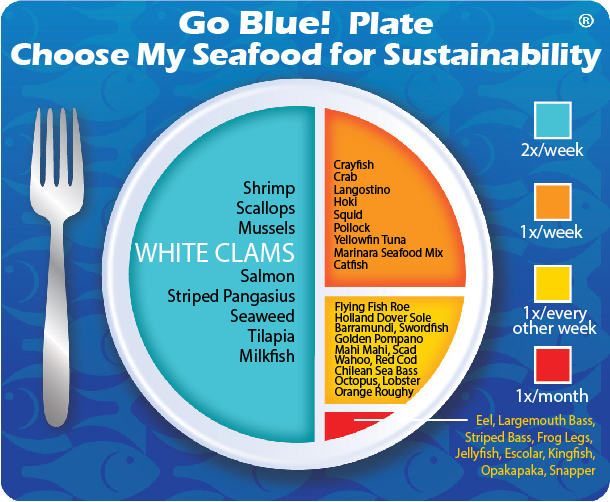
Sustainability Improvements NeededMonitoring of water quality and stocking densities need to be monitored to further guard against possible habitat degradation.
Actions that Sea Port is UndertakingSea Port is aggressively marketing farm raised White Hard Clams from Vietnam. Sea Port believes that increasing the overall consumption of bivalve mollusks (lower trophic level seafood) will further the protection of our aquatic environments while providing sustainably produced proteins for future generations.Sea Port believes that, in aggregate, choosing from a diverse variety of seafood is better for sustaining the world’s seafood resources and that White Hard Clams should be an important part of this variety. We created the sustainability assessments for each of our seafood items in order to reveal the existing and potential environmental impacts and risks that are associated with producing them for human consumption. This allowed us to establish the starting position for each of our seafood items along our progressive Go Blue! Seafood Sustainability Spectrum®. These assessments are only a single snapshot in time and because of this, we will continue to assess and update the critical sustainability needs associated with our supply sources and issue updates to the Go Blue! Seafood Sustainability Spectrum® as needed. There is a growing global awareness for the need to assure the sustainability of farmed and wild caught seafood and because of this; all around the world positive changes are rapidly occurring at all levels of the seafood supply chain. We will continue to spread this growing awareness and work with our many industry partners to improve the sustainability of all seafood, which we believe is the ideal protein of choice to feed an ever growing world population. Our Go Blue! Seafood Sustainability Spectrum® serves as our compass and yardstick as we strive to move all our products forward to becoming more sustainable. Please join us in this committed quest and Catch Our Wave® to sustainability by choosing a diverse variety of responsibly produced seafood as part of your diet.
|


